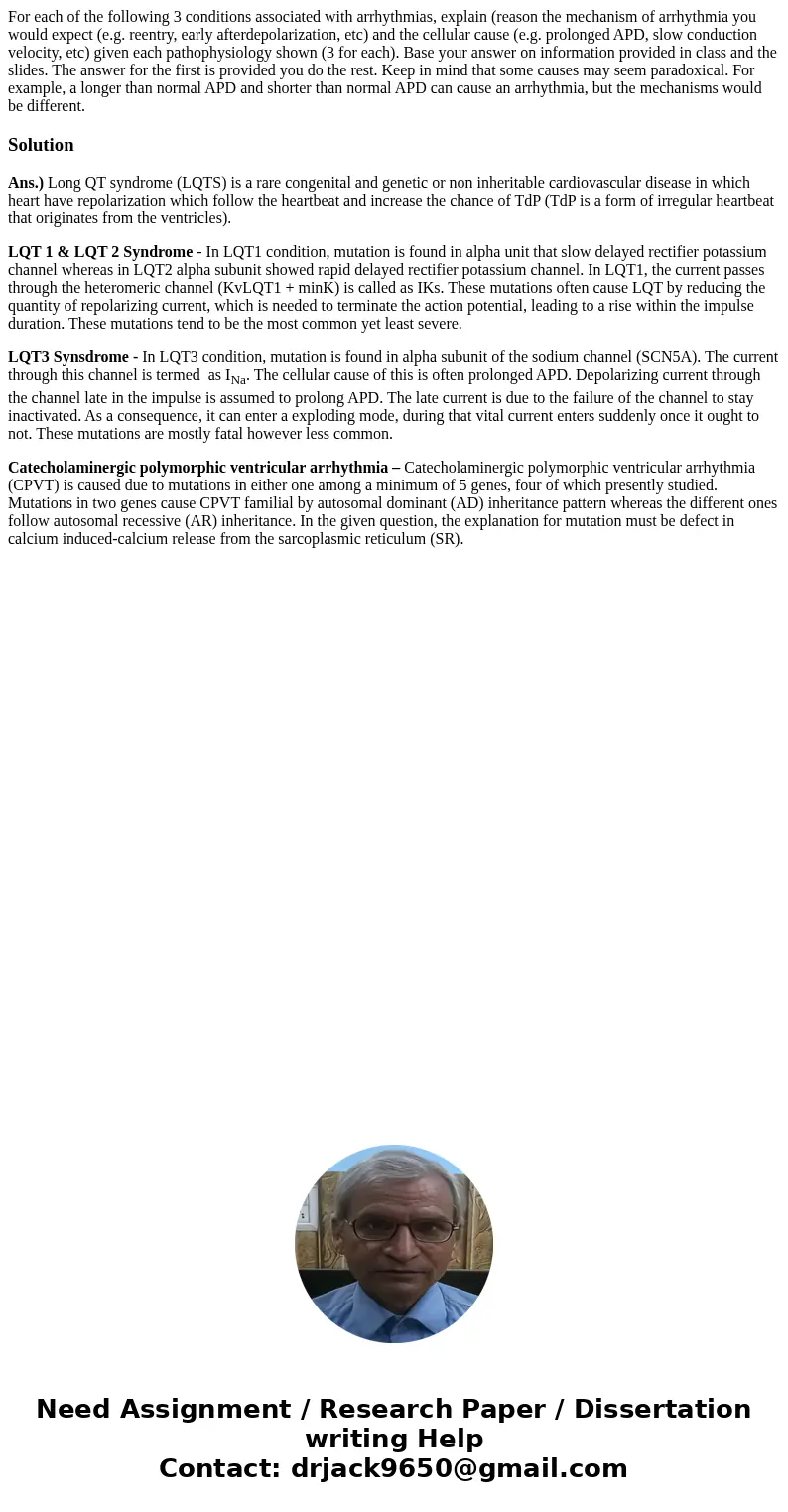For each of the following 3 conditions associated with arrhy
Solution
Ans.) Long QT syndrome (LQTS) is a rare congenital and genetic or non inheritable cardiovascular disease in which heart have repolarization which follow the heartbeat and increase the chance of TdP (TdP is a form of irregular heartbeat that originates from the ventricles).
LQT 1 & LQT 2 Syndrome - In LQT1 condition, mutation is found in alpha unit that slow delayed rectifier potassium channel whereas in LQT2 alpha subunit showed rapid delayed rectifier potassium channel. In LQT1, the current passes through the heteromeric channel (KvLQT1 + minK) is called as IKs. These mutations often cause LQT by reducing the quantity of repolarizing current, which is needed to terminate the action potential, leading to a rise within the impulse duration. These mutations tend to be the most common yet least severe.
LQT3 Synsdrome - In LQT3 condition, mutation is found in alpha subunit of the sodium channel (SCN5A). The current through this channel is termed as INa. The cellular cause of this is often prolonged APD. Depolarizing current through the channel late in the impulse is assumed to prolong APD. The late current is due to the failure of the channel to stay inactivated. As a consequence, it can enter a exploding mode, during that vital current enters suddenly once it ought to not. These mutations are mostly fatal however less common.
Catecholaminergic polymorphic ventricular arrhythmia – Catecholaminergic polymorphic ventricular arrhythmia (CPVT) is caused due to mutations in either one among a minimum of 5 genes, four of which presently studied. Mutations in two genes cause CPVT familial by autosomal dominant (AD) inheritance pattern whereas the different ones follow autosomal recessive (AR) inheritance. In the given question, the explanation for mutation must be defect in calcium induced-calcium release from the sarcoplasmic reticulum (SR).

 Homework Sourse
Homework Sourse